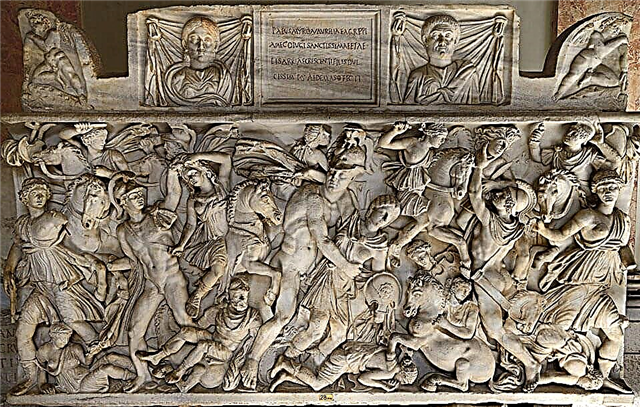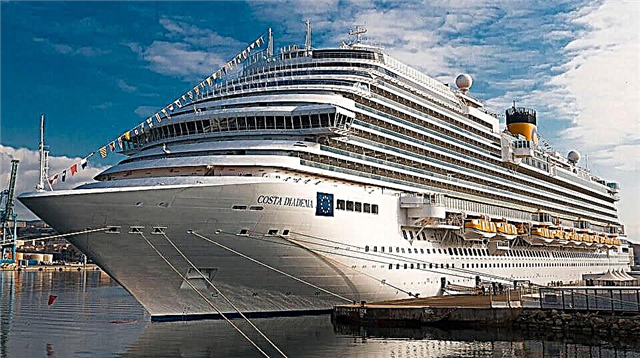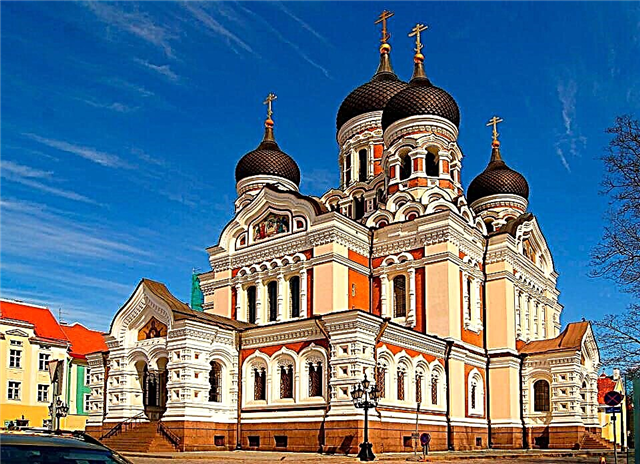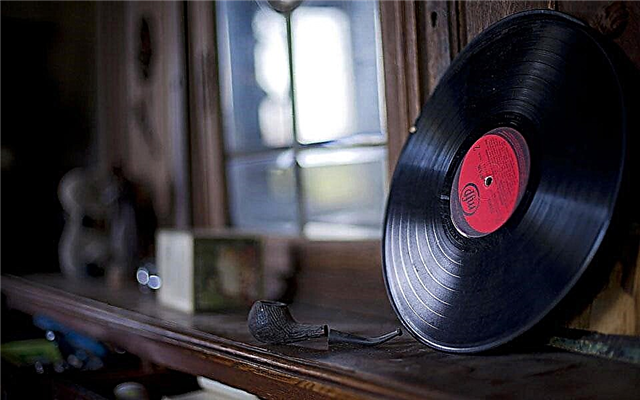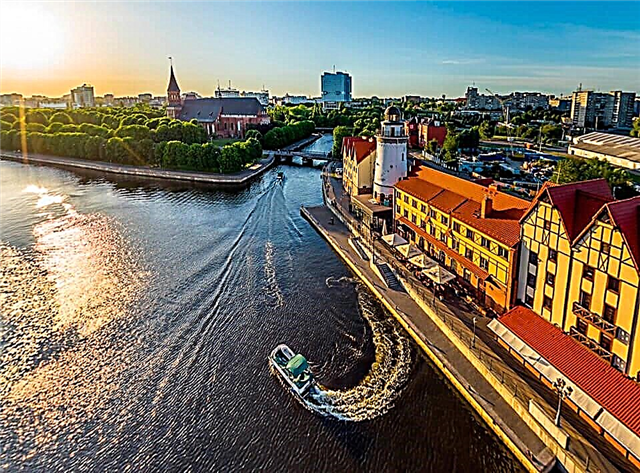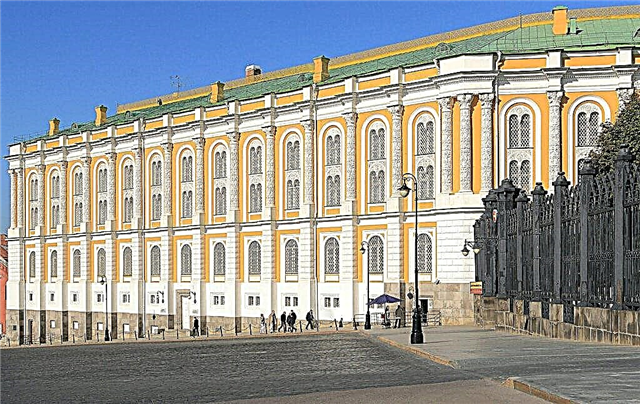The Moscow Kremlin is an amazing place. All guests of the city tend to visit it. But the residents of the capital do not lose interest in the heart of Russia either. The Armory Chamber of the Moscow Kremlin is a unique exposition. Here, visitors get to know the past of the country through the presented rarities. All exhibits have not only material and historical, but also scientific value. Many people strive to see with their own eyes the objects that were touched by the hands of Peter 1, Catherine the Great.
History

By order of Peter the Great, the sovereign's workshops and warehouses were to be transformed into a museum. This institution should have been named after the oldest repository - the Armory. But only Alexander I managed to complete this work in 1806.
A separate building was erected for the new exposition. During the work, the study and inventory of the collection were carried out. All were supervised by the Honorary Member Malinovsky. The first part of the catalog was published a year later. The circulation was paid personally by Emperor Alexander I. Malinovsky for the first time described the section of the exposition - State regalia.
The building to house the collection was built by the architect Egotov. It was completed in 1809, but finishing continued until the summer of 1812.
During Bonaparte's entry into Moscow, the building was damaged. Valuables were evacuated, but due to the fact that they were stored in boxes, the exhibits lost their former splendor. Restoration was required. After the reconstruction of the building and work with artifacts, the exposition moved to a permanent place. This only happened in 1814.
The purpose of organizing the exhibition is to foster patriotic feelings among the citizens of Russia, to remind them of their feats of arms.
It soon became clear that the building did not meet many requirements. There was no heating, the exhibits were damp and affected by the fungus. Wooden structures could easily catch fire. It was decided to place the Kremlin garrison in the Yegotov building, and to build a new room for the exposition.

The Egotov building was used as a barracks for over 100 years. Then the Soviet government decided to build the Kremlin Palace of Congresses, and the first building of the Armory was demolished.
Architecture

The first building was built by Yegotov in the classicism style. The cornice was decorated with heroes who glorified the country at different times, and diplomats.
There were images here:
- Minin and Pozharsky
- Peresvet and Oslyabi
- Ermak Timofeevich
- Matveeva
- Golitsyn
- Ordina-Nashchokina
The facade was decorated with scenes of heroic events in Russia. One could see pictures of Vladimir's choice of Orthodoxy, Russia's access to the seas in the south and north, getting rid of the Tatar-Mongol yoke.
The building had 2 floors. The first housed an archive, a model of the Grand Kremlin Palace designed by Bazhenov, and crews. The second is the exhibition itself. In the Crown Hall one could see the sovereign's regalia, among them - the cap of Monomakh.
The new building was built on the Kolymazhny yard according to Ton's project. It is organically combined with the Grand Kremlin Palace: the same columns, double-height windows. The building is located on a plinth with different heights. The combination of styles is quite bizarre: features of Russian architecture of the 17th century and Gothic are traced.
The suite has an axis from which 2 circular halls are separated. The halls are separated by gratings with two-headed eagles depicted. In the Imperial Treasury, marble medallions are inserted into the walls. They depict the rulers of the state.
Exposition

The main part of the exhibition is the rarities of the emperors. They were made in palace workshops, received as a gift from ambassadors of states. Exhibited here:
- ceremonial and coronation clothes of emperors
- state regalia
- collection of gold and silver items of Russian craftsmen
- vestments of the patriarchs
- weapon
- ceremonial harness
- royal carriages
- western jewelry
An entire section of the center is devoted to arts and crafts. Items from Russia, countries of the West and the East are presented.
Halls

Artifacts are distributed in several rooms:
- Hall 1 displays the most ancient treasures. Jewelry once belonged to princes, and then to the kings of the state. The stands display items brought from Byzantium in the 4-15th centuries. No one is left indifferent by the exhibits of pre-Mongol Rus. The items of decorative and applied art were made in Suzdal, Kiev, Chernigov, Ryazan. The showcases display gold and silver jewelry produced in Muscovy in the 15th and 16th centuries. A separate stand is dedicated to silver items made by masters of Veliky Novgorod.
- Hall 2 displays jewelery by the craftsmen from the 17th to 20th centuries. The core of the exposition is the treasures of the Golden and Silver Chambers of the Kremlin. In addition, products of provincial craftsmen from Solvychegodsk, Veliky Ustyug, Kostroma, Veliky Novgorod are on display. The following stands display products by master jewelers from famous houses: Faberge, Ovchinnikov, Semenov, Khlebnikov.
- Hall 3 displays weapons that were produced in different countries of the West and East. Armament was either specially purchased or donated by ambassadors.
- Hall 4 exhibits weapons made by Russian craftsmen of the 12-19 centuries. There is an extensive collection of cold steel and firearms. The ceremonial and hunting weapons are displayed separately. It is distinguished by its rich decoration.
- Hall 5 is dedicated to Western silverware. Basically, artifacts are gifts from ambassadors of friendly countries.
- Hall 6 displays the ceremonial and coronation costumes of the imperial family. In addition, the vestments of the metropolitans and patriarchs of the Russian Orthodox Church are exhibited here.
- Room 7 is dedicated to objects that were used in ceremonies. Some of them were inherited and over time began to have political significance.
- In hall 8 you can see the elements of the ceremonial harness.
- Hall 9 will delight visitors with ceremonial royal carriages.

Main exhibits

By analogy with 7 wonders of the world, 7 unique exhibits can be distinguished in the Armory:
- Of course, Monomakh's hat. Precious sable fur surrounds a patterned golden crown. It's beautiful in itself. But the hat also has great historical value.
- Feather-egret with sapphire. The horseman's decoration was presented to Catherine the Great by the Sultan Abdul-Hamid after the conclusion of the Kuchuk-Kainardzhi peace. The aigret feather is adorned with a rare yellow sapphire.
- Sleigh carriage. Nowadays you will hardly surprise anyone with such a combination. And in the time of Elizaveta Petrovna, this was an innovative solution. Historians claim that the Empress traveled in a strange carriage from St. Petersburg to Moscow for only 3 days. Usually about 10 days were spent on such a trip. Few carts have survived, the Elizabethan one of them.
- Mantle of ermine of the last Empress Alexandra Feodorovna. The skins of 800 animals went to dress clothes. And preserving the relic was not easy.
- Greater Zion. This tabernacle was previously used in the Kremlin's Assumption Cathedral. Its uniqueness lies in the fact that it is made in the form of an Orthodox church. Date of manufacture - 15th century. But some researchers are of the opinion that some elements of the rarity are much older.
- Osten-Sacken weapon set. The set was presented by the Parisians to the governor of Osten-Sacken as a token of gratitude for the exemplary behavior of the Russian troops in the captured city. On the handle was a 35-carat diamond stolen in the 1920s. During the restoration, the stone was replaced with a similar one.
- Flax goblet. Traditionally, the vassals brought such a cup filled with coins to their master.The peculiarity of the rarity is that the insects and frogs, cast from silver, were alive at the time of manufacture. This technique was common in 15th century Germany.
Tours

The Armory is a limited space. Therefore, the number of visitors is also limited. Guided tours are organized for guests. You can rent an audio guide in Russian or a foreign language, use a mobile application.
The administration of the exposition warns that at the entrance through the Borovitsky Gate there may be a queue for 30-40 minutes.
Interesting Facts

Under Ivan 3, the Great Treasury was located on the territory. Historians consider it to be the predecessor of the future Armory. In the first half of the 16th century, the Armory Order was formed. It was used to store weapons. In the second half of the 16th century, the name changed to the Armory.
Few people know that Ivan 4 organized workshops in the weapons storage. Various items were made in them according to the order of the sovereign. In the second half of the 17th century, the vault was supplemented with objects of art. It was from this time that the pantry became the center of all-Russian national art.
In the sovereign's workshops they made:
- weapon
- banners
- armor
- gilded bone and wood
- cut and forged iron
- painted icons
The foundations of the chamber were damaged during a fire in the Kremlin in the first half of the 18th century. The banners of Karl of Sweden's regiments captured in the Battle of Poltava burned down. Some of the rarities were damaged and could not be restored. The treasures that survived the fire were temporarily placed in the Terem Palace.
The building built for the treasury had no heating. In addition, it was made of wood, that is, a fire hazardous material. Rare books dried up, then damp, moldy and rusted. It turned out to be too expensive to re-equip the old premises. Therefore, it was required to build a new building.
By the beginning of the war of 1812, the funds of the exposition were quite impressive. They were evacuated to Nizhny Novgorod. Unfortunately, the conditions at the place of temporary storage were not suitable: some of the items needed restoration.
During the Great Patriotic War, the question of preserving rarities arose. At first, it was supposed to hide the exhibits in the Taynitskaya Tower. But by the fall it became clear that evacuation was inevitable. The treasures were loaded into wagons and sent to Sverdlovsk. 11 employees went with valuables. The operation was secret, controlled by the NKVD.
In Sverdlovsk the local NKVD accepted the rarities for safekeeping. The employees were housed in barracks. But the values were not left unattended. The evacuated workers examined the treasures, carried out restoration work on their own.
Exhibits that were difficult to transport were left in the Kremlin Armory Chamber: carriages, thrones. They were kept by the employees who remained in Moscow. The work was supervised by the commandant of the Kremlin and the director of the museum. In 1943 they were awarded orders.
Preparations for the return of the rarities began after the threat hanging over Moscow had passed. It took several years. The treasures returned to their permanent place only in February 1945.
Visiting rules
Citizens wishing to visit the exposition are obliged to follow the rules:
- arrive at the time indicated on the entrance ticket
- leave bulky items in the storage room
- it is forbidden to visit the exhibition with animals
- it is forbidden to stay at the exposition after the end of the session
- it is forbidden to stay on the territory of the exposition while intoxicated
- it is forbidden to speak loudly or make noise during the excursion
- it is forbidden to conduct your own excursion
- video or photography is prohibited
- it is forbidden to bring food and drinks with you, including alcoholic
- it is forbidden to eat and drink
- it is forbidden to run on the territory of the exhibition
- it is forbidden to go behind the installed fences
In case of violation of the rules, the administration has the right to remove the visitor from the territory of the exposition. In case of active disobedience, measures can be taken in accordance with the laws of the Russian Federation.
Working hours
The exposition is open to visitors from 10 am to 6 pm (except Thursday). You can inspect it by sessions:
- 10.00
- 12.00
- 14.30
- 16.30
Detailed information on the official website of the museum
How to get there
The easiest way to get to the exhibition is by metro. You should get off at one of the stations: Borovitskaya, Lenin Library, Alexandrovsky Garden. Then walk towards the Borovitsky Gate of the Moscow Kremlin.



